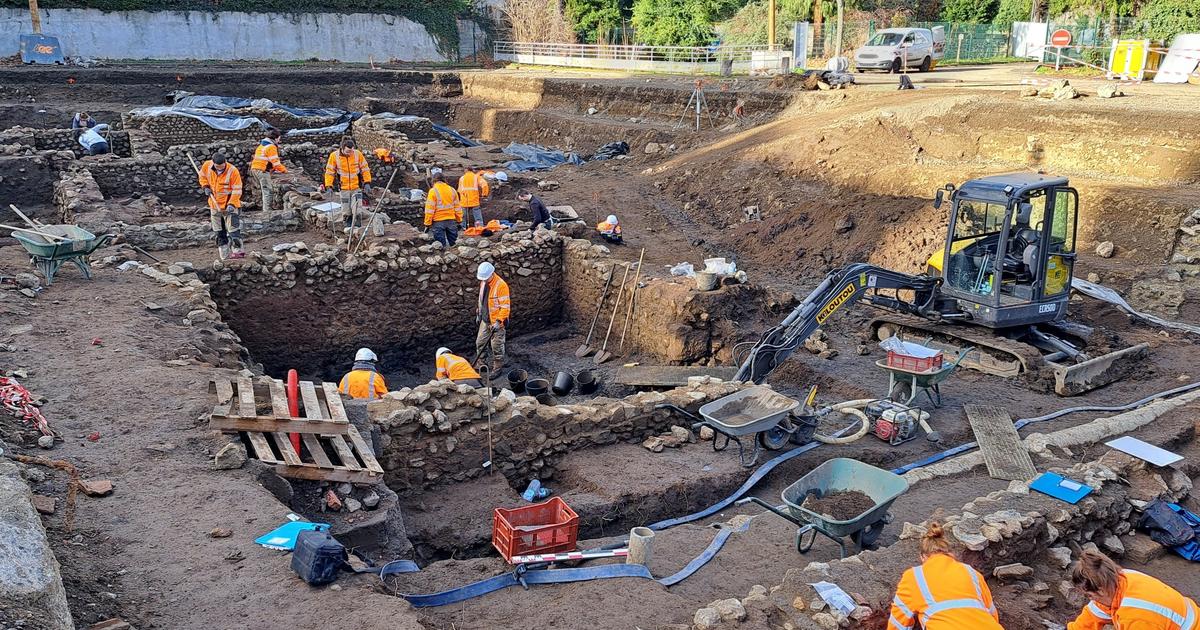archaeologists from the National Institute for Preventive Archaeological Research (Inrap) excavated two sectors in the Saint-Victor parking lot in Chamalières From November 2023 to June 2024. These remains correspond to a residential area located on the right bank of the stream la Tiretaine during
the 1st century AD, less than a hundred meters from the ancient thermal baths of Royat.
The study of the first zone began in November 2023 and will be completed in March 2024, while the second phase of
archaeological work will take place from April to June 2024.
If the Roman baths, exhumed between 1876 and 1882, still visible in the Royat casino park, rightfully belong to the heritage of the Auvergne town, the remains exhumed in Chamalières remained largely ignored.
Located on the outskirts of Augustonemetum (Clermont-Ferrand in Latin), more precisely on the road leading to the great temple of Mercury, this place rich in several sources, already exploited by the Romans, probably favored the construction of dwellings in the 1st century AD.
Read alsoArchaeologists try to save a fascinating Roman golden fleece discovered in Autun
The first analyzes of the excavations show that these houses were the subject of a succession of renovations or even redevelopments.
Inrap specialists believe that the overflowing of the river damaged part of the buildings and probably led their occupants to raise the land either by creating terrace walls or by filling in the existing ruined buildings and settling on the platforms thus created.
Today we can see a wall architecture of almost two meters.
Hearths made up of tiles arranged on earthen floors, a well and a large oval pool decorated with a ramp, the function of which has yet to be defined, were brought to light.
Finally, the abundant ceramic furniture collected should make it possible to precisely date each phase of occupation.

